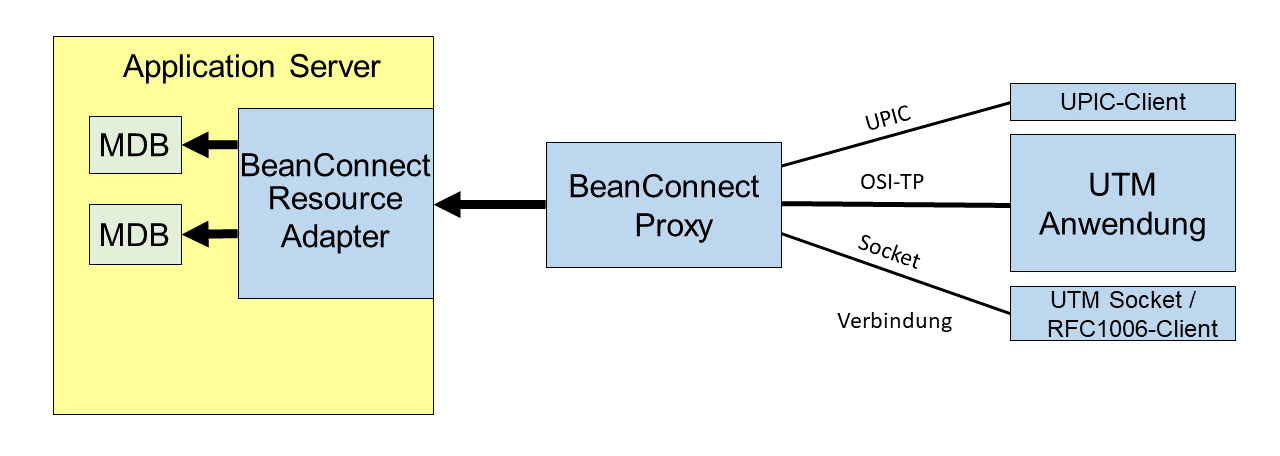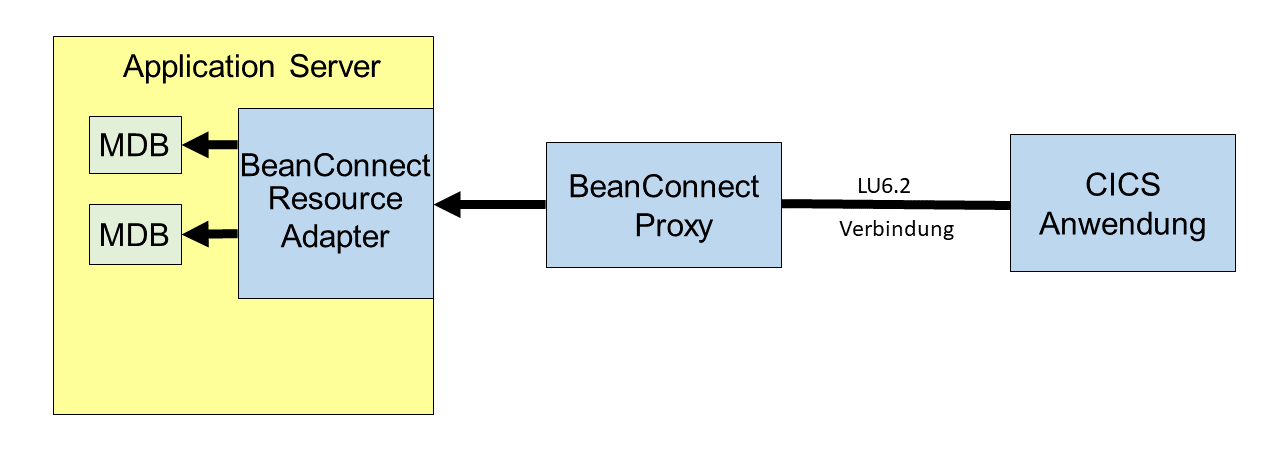Bei Inbound-Kommunikation sendet ein EIS Nachrichten an eine Message-Driven Bean-Anwendung in einem Java EE Application Server. Die Message-Driven Bean muss ein Resource Adapter-spezifisches Message-Listener-Interface implementieren. BeanConnect unterstützt das Service Endpoint Message Listener Interface, das zu dem in der JCA-Spezifikation definierten CCI (Common Client Interface) gehört, und darüber hinaus jeweils ein eigenes Message-Listener-Interface für asynchrone und dialogbasierte Kommunikation (siehe Interfaces).
BeanConnect unterstützt folgende Kommunikationsarten für Inbound-Kommunikation:
EIS ist eine UTM-Anwendung
transaktionale und nicht-transaktionale Kommunikation über das OSI TP Protokoll (asynchrone und dialogbasierte Kommunikation)
nicht-transaktionale Kommunikation über das UTM-Socket- oder das RFC1006-Protokoll (nur asynchron)
EIS ist eine CICS-Anwendung
transaktionale und nicht-transaktionale Kommunikation über das LU6.2-Protokoll (asynchrone und dialogbasierte Kommunikation)
EIS ist eine andere Anwendung
UPIC-Anwendung: nicht-transaktionale Kommunikation über das UPIC-Protokoll (dialogbasierte Kommunikation)
UTM-Socket-Client oder RFC1006-Anwendung: nicht-transaktionale Kommunikation über das UTM-Socket- oder das RFC1006-Protokoll (asynchron und dialogbasierte Kommunikation)
Bild 10: Inbound-Kommunikation für UTM-Partner
Bild 11: Inbound-Kommunikation für CICS-Partner


